|
Months spent on a sunny beach will probably lighten your hair, but it will damage it. Which is why you need to keep that hat on! BACK in the ’80s and ’90s, many Aussie girls forked out their hard-earned cash on a bottle of SunIn, soaked their hair, then lay out in the sun, hoping for lighter tresses. But it turns out we probably didn’t need the extra help that spray provided. Spending all summer outdoors will lighten your hair even if you don’t put anything extra in it. Trichologist Anthony Pearce says it’s all down to ultraviolet radiation. The colour pigment in our hair shafts is oxidised by exposure to ultraviolet radiation, that according to Pearce, is “the same chemical process as having the hair bleached”. This might sound like welcome news for those who spend hundreds of dollars (and hundreds of hours in the hairdresser’s chair) attempting to lighten their hair. But be warned, “sun-kissed” hair isn’t exactly a good thing. “The sun can ‘bleach’ hair blonde but in doing so degrades the hair as well,” Pearce, founder of Anthony Pearce Trichology, explains. A lighter hair colour as a result of time spent in the sun equals a permanently weakened hair shaft. Hello split ends, dryness and a whole lot of irreversible damage. The solution? For starters, wear a hat when you’re outdoors and opt for hair products that provide protection from ultraviolet radiation — they’re like sunscreen for your hair. “I’m a big believer in protecting your hair against UV rays the same as we do for our skin. It is especially important for weak or colour-treated hair,” explains Lisa Farrall, hair expert for Fudge Professional. “It is also important to think of your scalp, especially your part. I find the best trick is to use a high SPF lip balm on your scalp to avoid it burning, it’s easy to apply with no grease and it will stop you from having a flaky scalp.” If you are looking to speed up the hair lightening process, there are some great options out there that don’t involve sun damage. For anyone who grew up in the late nineties or early noughties and abused hair lightening product Sun In like I did (I still shudder thinking about the Coke-coloured patches on my head), you’ll be pleased to know the technologies and formulas have improved dramatically. The key? Three-time Australian Hairdresser of the Year and Co-Creative Director of ELEVEN Australia, Joey Scandizzo, recommends simply asking for subtle highlights. “Most hairdressers understand what ‘sun-kissed’ hair is — a great way to describe it is to say you would like subtle variation through the front or the ends which are generally the places the sun hits,” explains Scandizzo. “Sun-kissed means you want to go only one or two shades lighter, nothing too drastic.” If you’re religious about keeping your hair out of the sun but still find your hair has lightened by the time March rolls around, there are a couple of reasons for that. “Salt water will also lighten hair in it’s dual effects with ultraviolet light. Salt water can add to hair damage as it can swell and dry hair shafts; making them more porous and prone to breakage,” explains Pearce. Oh, and that chlorinated pool you’ve been swimming in? It’s not your hair’s friend either. “As an alkaline, chlorine is potentially the most damaging to hair. Hair should be double shampooed immediately after swimming. Depending upon what chemicals are added to the pool water, Chlorine pools can gradually cause a green/blue discolouration to hair,” says Pearce. from news.com.au
0 Comments
8/20/2021 0 Comments 9 Steps to Washing Your Hair LessWeaning yourself off the shampoo bottle might seem daunting, but anyone can do it, given the right approach. I have developed a reputation for being TreeHugger's 'hair' person, thanks to all the weird experiments I've done over the years, from ditching shampoo in favor of baking soda and apple cider vinegar to not washing with any cleanserfor forty days. As a result, I get a lot of questions about hair care, particularly from friends who read my posts and wonder how I do it. The most common complaint I hear is, "My hair is so greasy. I could never go that long without washing." Many women and men are preoccupied with this idea of greasiness and needing to fight it on a daily basis. I used to be in this situation myself. I've come to believe that this is a real problem, and that our obsession with combatting greasy hair gets in the way of appreciating how much more manageable and healthy hair can be when it does have a bit of oil in it. It is crucial to understand that the more you wash your hair, the greasier it will get. When shampoo strips the hair of its natural oils, the scalp compensates for that loss by producing more oil.1 It creates a cycle in which more washing leads to more oil, and so on. In order to break it, you must be willing to put up with levels of oiliness that may not feel acceptable at first, but eventually an equilibrium will be established. I give the following advice when people ask me about how to improve their hair care routines. Accept the Oil  Hair is not meant to feel dry and freshly washed all the time; and even if that's what you're used to, you'll learn to appreciate the feeling of slightly oily hair that's smooth, easy to style, frizz-free, and shiny. Slowly Reduce the Number of Washes Use Less Cleanser If you're a shampoo user, use less so that your hair doesn't get quite so clean. Avoid the unnecessary repeat wash. If you use baking soda and apple cider vinegar, use less. (I started using 2 tbsp of each per wash, but now I'm down to 1 tbsp when I do it. See quantities here.) Do a water-only rinse if you're sweaty after a workout. Massage and Brush 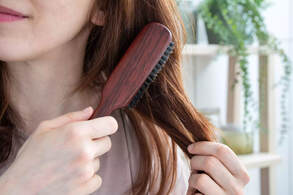 Give yourself a vigorous scalp massage with your fingertips to move the oil away from the scalp and distribute down the hair shaft. Do this once or twice daily. Use a hairbrush to do the same. But for the rest of the time, see the next point... This won't happen overnight. If you wash daily, try to push it by 12 hours, then skip a day. Avoid washing on weekends if you don't have plans. Avoid Touching Your Hair 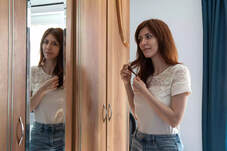 There's oil on your fingers that will make hair limp and lackluster, the more you touch it. Try to keep your hands off your hair unless you're styling or massaging. Use a Natural Dry Shampoo to Stretch the Time Between Washes
Learn the Hairstyles That Work 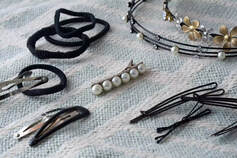 The trick to managing greasiness, I've discovered, is about figuring out how to wear your hair in ways that work. Take advantage of braids, ponytails, buns, headbands, and hairpins to feel presentable and to stretch the time between washes. I find that straightening my hair a day or two after washing helps it go much longer. Think of Washing as Something You Do Only When You Need It, Not Because It's Time 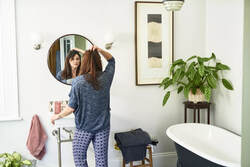 You probably have a hair-washing schedule; but rather than washing it automatically just because that time has come, reassess your hair and see if it can go further. You might be surprised. I now push my washes from 6 to 10 days -- and the difference in the amount of greasiness from day 6 to day 10 is minimal. Don't Give up 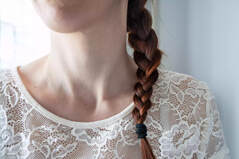 Reducing the frequency of hair-washing will save you loads of time and money. It will result in healthier, stronger, more manageable hair. Go gradually and steadily. It might take two or three months, and you may feel discouraged along the way, but realize that anyone can do this. From TreeHugger
(And It’s Reversible) Legend has it that Marie Antoinette’s hair turned gray overnight just before her beheading in 1791. Though the legend is inaccurate—hair that has already grown out of the follicle does not change color—a new study from researchers at Columbia University Vagelos College of Physicians and Surgeons is the first to offer quantitative evidence linking psychological stress to graying hair in people. And while it may seem intuitive that stress can accelerate graying, the researchers were surprised to discover that hair color can be restored when stress is eliminated, a finding that contrasts with a recent study in mice that suggested that stressed-induced gray hairs are permanent. The study, published June 22 in eLife, has broader significance than confirming age-old speculation about the effects of stress on hair color, says the study’s senior author Martin Picard, PhD(link is external and opens in a new window), associate professor of behavioral medicine (in psychiatry and neurology) at Columbia University Vagelos College of Physicians and Surgeons. “Understanding the mechanisms that allow ‘old’ gray hairs to return to their ‘young’ pigmented states could yield new clues about the malleability of human aging in general and how it is influenced by stress,” Picard says. “Our data add to a growing body of evidence demonstrating that human aging is not a linear, fixed biological process but may, at least in part, be halted or even temporarily reversed.” Studying hair as an avenue to investigate aging“ Just as the rings in a tree trunk hold information about past decades in the life of a tree, our hair contains information about our biological history,” Picard says. “When hairs are still under the skin as follicles, they are subject to the influence of stress hormones and other things happening in our mind and body. Once hairs grow out of the scalp, they harden and permanently crystallize these exposures into a stable form.” Though people have long believed that psychological stress can accelerate gray hair, scientists have debated the connection due to the lack of sensitive methods that can precisely correlate times of stress with hair pigmentation at a single-follicle level. Splitting hairs to document hair pigmentation Ayelet Rosenberg, first author on the study and a student in Picard’s laboratory, developed a new method for capturing highly detailed images of tiny slices of human hairs to quantify the extent of pigment loss (graying) in each of those slices. Each slice, about 1/20th of a millimeter wide, represents about an hour of hair growth. Hair pigmentation patterns of 100 hairs from a male and female study participant. Darker hair colors represented in red; lighter in blue. Image from Rosenberg et al. (2021). “If you use your eyes to look at a hair, it will seem like it’s the same color throughout unless there is a major transition,” Picard says. “Under a high-resolution scanner, you see small, subtle variations in color, and that’s what we’re measuring.”
The researchers analyzed individual hairs from 14 volunteers. The results were compared with each volunteer’s stress diary, in which individuals were asked to review their calendars and rate each week’s level of stress. The investigators immediately noticed that some gray hairs naturally regain their original color, which had never been quantitatively documented, Picard says. When hairs were aligned with stress diaries by Shannon Rausser, second author on the paper and a student in Picard’s laboratory, striking associations between stress and hair graying were revealed and, in some cases, a reversal of graying with the lifting of stress. “There was one individual who went on vacation, and five hairs on that person’s head reverted back to dark during the vacation, synchronized in time,” Picard says. Blame the mind-mitochondria connection To better understand how stress causes gray hair, the researchers also measured levels of thousands of proteins in the hairs and how protein levels changed over the length of each hair. Changes in 300 proteins occurred when hair color changed, and the researchers developed a mathematical model that suggests stress-induced changes in mitochondria may explain how stress turns hair gray. “We often hear that the mitochondria are the powerhouses of the cell, but that’s not the only role they play,” Picard says. “Mitochondria are actually like little antennas inside the cell that respond to a number of different signals, including psychological stress.” The mitochondria connection between stress and hair color differs from that discovered in a recent study of mice, which found that stress-induced graying was caused by an irreversible loss of stem cells in the hair follicle. “Our data show that graying is reversible in people, which implicates a different mechanism,” says co-author Ralf Paus, PhD, professor of dermatology at the University of Miami Miller School of Medicine. “Mice have very different hair follicle biology, and this may be an instance where findings in mice don’t translate well to people.” Hair re-pigmentation only possible for some Reducing stress in your life is a good goal, but it won’t necessarily turn your hair to a normal color. “Based on our mathematical modeling, we think hair needs to reach a threshold before it turns gray,” Picard says. “In middle age, when the hair is near that threshold because of biological age and other factors, stress will push it over the threshold and it transitions to gray. “But we don’t think that reducing stress in a 70-year-old who’s been gray for years will darken their hair or increasing stress in a 10-year-old will be enough to tip their hair over the gray threshold.” More information The study is titled “Quantitative Mapping of Human Hair Greying and Reversal in Relation to Life Stress(link is external and opens in a new window).” All contributors (all from Columbia unless noted): Ayelet Rosenberg, Shannon Rausser, Junting Ren, Eugene V. Mosharov, Gabriel Sturm, R. Todd Ogden, Purvi Patel, Rajesh Kumar Soni, Clay Lacefield (New York State Psychiatric Institute), Desmond J. Tobin (University College Dublin), Ralf Paus (University of Miami, University of Manchester, UK, and Monasterium Laboratory, Münster, Germany), and Martin Picard. The research was funded by grants from the Wharton Fund and the National Institutes of Health (grants GM119793, MH119336, and AG066828). The authors declare no competing interests. 8/13/2021 0 Comments Men: A step-by-step guideto achieve 4 'oppa' hairstyles from BTS’ V to Hyun BinWhen it comes to great-looking hair, you can’t go wrong taking a cue from Korean pop stars and leading men. You might want to skip the barber for this round. Thinking it’s about time to switch things up, hair-wise? Guys, if you’re still getting that dated undercut or the same quick once-over with the hair clippers – yes, we think you’re definitely in need of a hair makeover and perhaps should consider going to a hair salon instead of the barber. Want a 'do that will up your style cred, as well as get you the right attention? Look to the heads of South Korea’s most popular idols and celebrities for inspiration. They’re setting the biggest hair trends for men in Asia, if not the world, according to Readen Chia, associate director of Chez Vous Hair Salon. CNA Lifestyle got him to pick out four “oppa” (older brother) hairstyles that a regular guy can also successfully try, and explain what goes into their making – whether they require a specific cut, hair product, hairstyling tools and techniques that, we assure you, won’t be too tough to execute. GONG YOO’S CURTAIN PARTED BANGS This hairstyle is all about the bangs, which can be parted at the centre or on either side of the hairline (best done in a 3:7 ratio) – no surprise why it takes its name from the drapes hanging over your windows. Obviously, a longer fringe is requisite for this look. At the same time, it requires some level of volume and texture – in other words, you’ll probably need a perm or, in lieu of that, decent DIY hairstyling skills. Chia noted that this hairstyle is usually worn with wavy, permed hair. “Unfortunately, this oppa hairstyle may scream ahjussi (uncle) for some, because not everyone looks good with wavy hair. In fact, some of us may look older than we actually are after a perm,” he said. Want a preview of how it will look on you? Chia suggested asking your hairstylist to create a temporary wave for you with hairstyling tools before you take the plunge. Chia also advised those with thinning hair or very fine hair to stay away from curtain bangs. “This hairstyle requires good hair density and thickness, otherwise, the parting will look overly wide and sparse,” he explained. Once you have a perm in place, it’s not too complicated to finesse the look at home. Here’s what to do:
V OF BTS’ MODERN MULLET This year’s trendiest hairstyle for men is, admittedly, not easy to accept for the average Singaporean gent. But that’s what trends are – they are not meant for everyone, but those with the requisite attitude to pull them off, and definitely jobs that do not have a strict dress code. Most people think of G-Dragon when the mullet is mentioned, but there are actually many other subtler takes on the hairstyle besides the extreme versions seen on the Korean rapper. In fact, Chia thinks that it can be a very versatile hairstyle for men. “The mullet can be customised to suit different hair types, and there are so many variations on the style. You can wear it longer at the back and with micro bangs for a punk-rock vibe; with a side fringe part or comma fringe (described below) for a K-pop-idol-inspired look; or not quite so long at the back and with a permed top and fringe for a preppy-ish look,” he explained. To achieve the version of the modern mullet you desire, Chia advised to go to your hairstylist with reference pictures, since it can be hard for the layman to describe or distinguish between the many different components of the hairstyle’s multiple variations. “Take note that the back of a mullet can grow out of shape quickly, so it may not be ideal for those with uneven hair growth or a slanted hairline at the back, and probably those who dislike making frequent trips to the salon for haircut maintenance,” he added. A pro of having a mullet is that it is easy to style at home, says Chia. Here’s what to do:
KIM SOO-HYUN’S COMMA HAIR Named after the punctuation mark because of the curled-inwards fringe, this hairstyle has been popular among male Korean idols since a few years ago and, according to Chia, is still in fashion now. The best thing about it is that you don’t need a perm – all you need is to know how to produce a C-shaped curl with either a flat iron or a hairdryer. It’s not too complicated for a guy to learn – ask your hairstylist for tips on how best to recreate the look he or she has given you. While comma hair used to be seen on Korean stars in a more precise, defined shape, these days, it’s more commonly worn in a slightly tousled, more-textured style. “Comma-ed” bangs are typically worn on the highly popular two-block cut, or its slightly mushroom-shaped cousin. Get the haircut right and you’re set for hairstyling success at home:
HYUN BIN’S SLICKED-BACK HAIR A classic hairstyle for men, this style channels a smart, dressy vibe, which explains why Korean celebrities love to sport it when attending award ceremonies. Chia pointed out that you’d hardly see any guys with slicked-back hair on the streets in South Korea, however, because many of them actually consider it to be a dated hairdo that makes them look older than they really are. “For most Korean men, a visible fringe is an important ‘tool’ for appearing youthful – a trait not found in slicked-back hair,” he added. Still, it’s an undeniable fact that the stars look great in the slicked-back look, and you can too. Their secret? Instead of pulling their hair from the front and straight to the back from the hairline, they go for a side-swept variation with a parting. This hairdo will suit just about any type of hair, although it may look more modern if your hair is cut shorter on the sides and back of the head. “This is the easiest men’s hairstyle to style at home,” said Chia. For an updated take, leave some strands of the fringe loose and tousled for a “carefree” look.
From CNA Lifestyle
For blonde hair in the ’70s, lemon & sunshine recommended (1977) Asbury Park Press (Asbury Park, New Jersey) April 11, 1977 If you’re a natural blonde, you know you have special problems when it comes to keeping your hair bright and shiny. Now a New York hairstylist has a special tip for blondes who find it hard to keep the “sunshine” in their hair. “Step one,” says Louis of Louis Guy-D, “is to wash the hair often with a gentle shampoo. Naturally blonde hair must be absolutely clean to be its brightest, and this may mean daily shampooing, for which baby shampoo is always recommended. “Blondes can’t go very long between shampoos before dirt and oil turn their hair ‘mousey’ looking. Also, when blonde hair is dry, it can look like straw. Baby shampoo doesn’t strip the hair of all its natural conditioners, which helps blonde hair shimmer with natural highlights.” 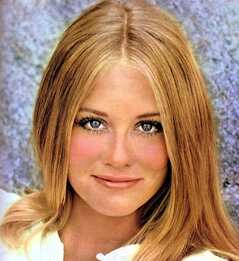 Then, to continue the natural approach to bright, shiny blonde hair, Louis suggests a lemon or lime squeeze. “Simply take a lemon or lime and squeeze it onto freshly-washed hair, gently comb through and let dry, preferably in the sun, but a hairdryer will do on rainy days.” Louis says the citrus juices act as a mild bleach and gently lighten the hair. “Continue this treatment for a few days, and any natural blonde will see her hair lighten up, take on shiny highlights and glow just like sunshine,” promises Louis. “By starting this natural highlighting treatment now,” says Louis, “blondes can have sun-lightened hair well before it’s time to slip into that first bikini.” Speed up the sun with Sun-In (1970) Get the true sun-lightened look fast! Just spray on Sun-In. Give your hair that sun-lightened look that once took all summer. Sun In works with nice, warm, natural sunshine. Lightens faster than the sun. But never so fast as those harsh hair-lighteners. You’re in complete control — from that first little highlightening to as sun-lightened as you’d like to look. And because Sun In conditions, use it often ’til you and your own special sun-lightened look discover each other. You’ll look like you spent all summer in the sun. Try regular or (for the maximum sun-lightened look) new Super Sun In. All you add is sun. California Blonde: The first lightener, toner & conditioner all in one. (1970) Max Factor creates “Color-Controlled Blonding”… so even brownettes can go blonde in one lightening-quick step. It’s sunshine you shampoo in. Now brownettes can go blonde and blondes can go blonder. The very first time. And in one lightening-quick step. Only California Blonde gives you these shades, all softness and sunshine. Truly natural-looking blondes that last shampoo after shampoo. And if you like the idea of hair that’s more manageable, healthier-looking, and nicer to touch, only California Blonde gives you the benefit of 12 conditioners in a proteined base. You’ll see, no matter which coast you live on,life’s a lot sunnier when you’re a California Blonde. In 6 Glow West Shades. New Tried & True California Blonde. Only by Max Factor. Clairol’s Born Blonde (1969) Years ago, there were only two types of blondes. Demure but mousey. And bright but brassy. But, baby, things have changed. And today a blonde can be downright sexy and still be a lady. If she knows about Clairol’s Born Blonde. Born Blonde isnt a timid blonde that promises everything and then doesn’t deliver. But it isn’t an old-fashioned formula with peroxide in both steps either. (It was those tough-as-brass bleached cuties that started the rumor that blondes were dumb.) Born Blonde is different. Feels different. Acts different. First, you gently take the darkness out of your hair with Born Blonde lightener. Then you shampoo in Born Blonde toner in any of 12 shades. Extra rich (we put in lots of conditioners) and extra gentle (we leave out peroxide), Born Blonde toner makes your hair feel good while it makes it look good. Of course, using Born Blonde isn’t sticking to the rules. But do you want to play fair? Or win? When you go blonde, go all the way Lemony fresh! Lemony fun! (1970) Lemon Go Lightly – Gently lightens under the sun! Brown, blonde or in between? You can go lighter with CLAIROL Lemon Go Lightly. It lightens your hair with a little helpfrom the sun. Just spray it on, and go as light as you like… gently … gradually. Rich CLAIROL conditioners help protect your hair’s natural texture. keep it soft and manageable as it lightens. P.S. If you’re a darker brownette, or a blonde in a hurry, get CLAIROL Lemon Go Lightly Plus. Hair. If it’s timid it’s not today (1970) Remember grade school and that little blonde with the long braids? The one all the boys adored? Well, boys still adore girls with blonde braids. But a fat lot of good that does you if your hair is washed-out blah mousey brown or dull and dark. And if you think summer and the sun and a timid formula is enough to make you really blonde, you’re just fooling yourself. What you need is Clairol’s Born Blonde. Lemon Go Lightly (1971) Has your hair gone into hibernation?
Brown, blonde or in between? You can go lighter with CLAIROL Lemon Go Lightly. It lightens your hair with a little help from the sun. Just spray it on, and go as light as you like… gently … gradually. Rich CLAIROL. conditioners help protect your hair’s natural texture. keep it soft and manageable as it lightens. P.S. If you’re a darker brownette, or a blonde in a hurry, get CLAIROL Lemon Go Lightly Plus. |
Hair by BrianMy name is Brian and I help people confidently take on the world. CategoriesAll Advice Announcement Awards Balayage Barbering Beach Waves Beauty News Book Now Brazilian Treatment Clients Cool Facts COVID 19 Health COVID 19 Update Curlies EGift Card Films Follically Challenged Gossip Grooming Hair Care Haircolor Haircut Hair Facts Hair History Hair Loss Hair Styling Hair Tips Hair Tools Health Health And Safety Healthy Hair Highlights Holidays Humor Mens Hair Men's Long Hair Newsletter Ombre Policies Procedures Press Release Previous Blog Privacy Policy Product Knowledge Product Reviews Promotions Read Your Labels Recommendations Reviews Scalp Health Science Services Smoothing Treatments Social Media Summer Hair Tips Textured Hair Thinning Hair Travel Tips Trending Wellness Womens Hair Archives
November 2024
|
|
Hey...
Your Mom Called! Book today! |
Sunday: 11am-5pm
Monday: 11am-6pm Tuesday: 10am - 6pm Wednesday: 10am - 6pm Thursday: By Appointment Friday: By Appointment Saturday: By Appointment |



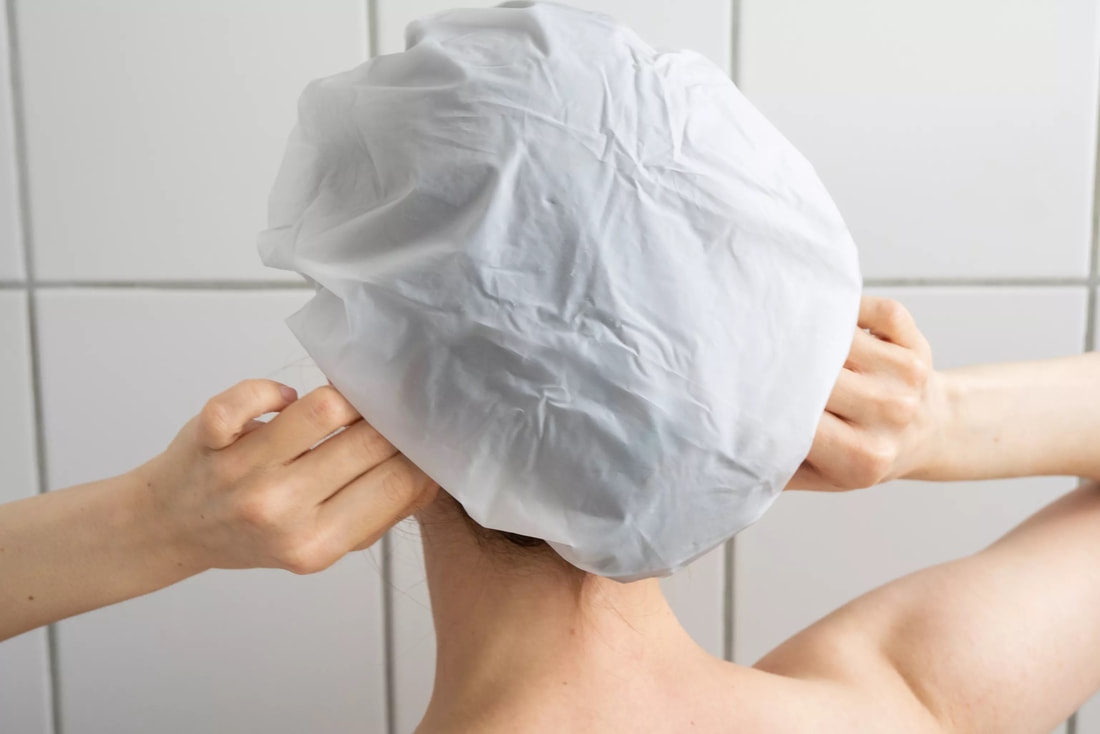

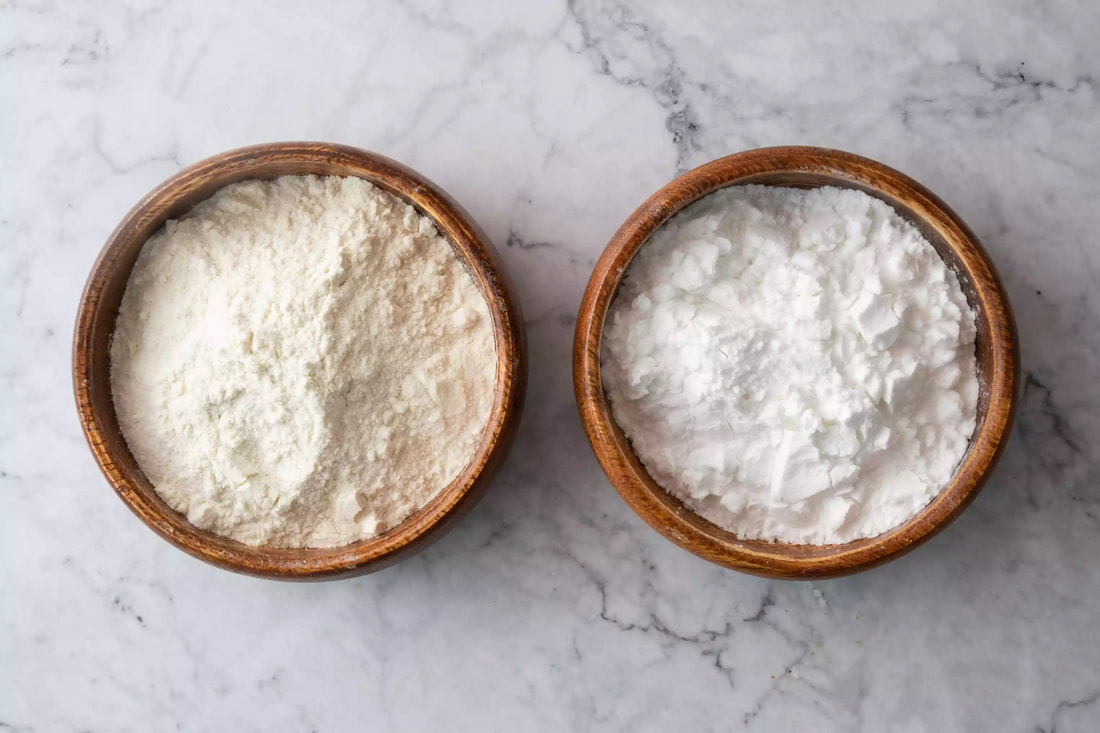


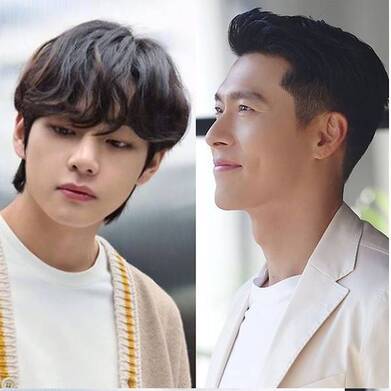
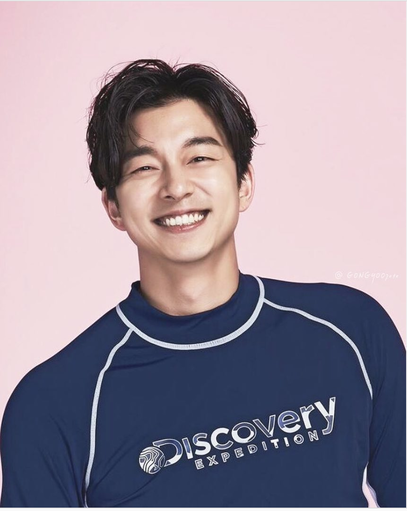




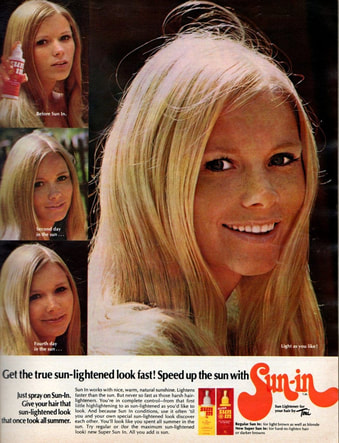
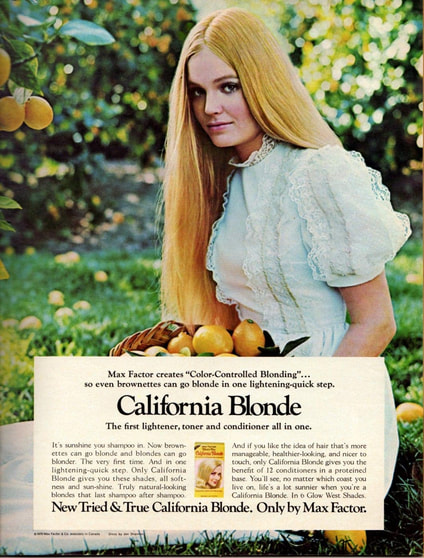
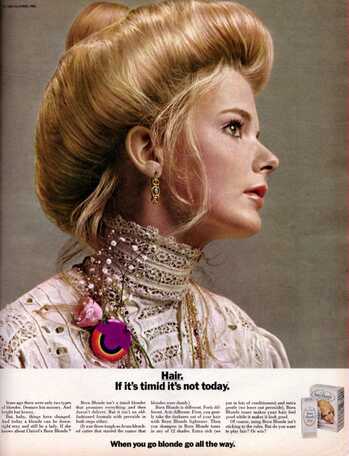
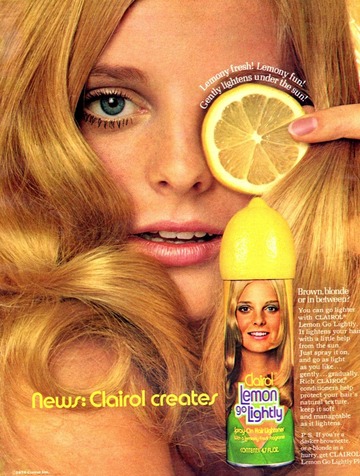
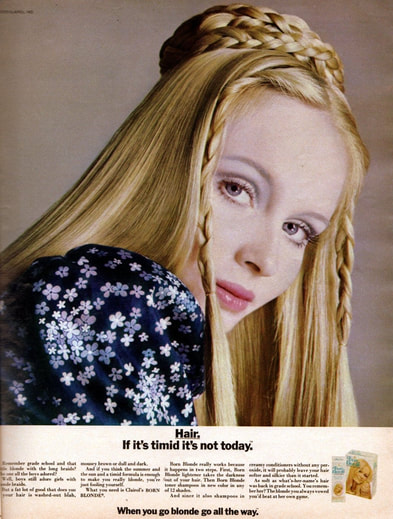
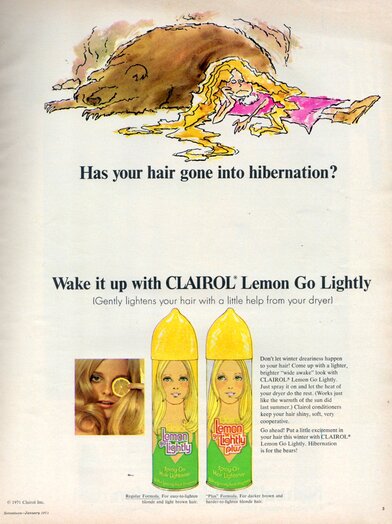
 RSS Feed
RSS Feed